All rights reserved. Published 2016.
Names: Goldhill, Simon, author.
Title: A very queer family indeed: sex, religion, and the Bensons in Victorian Britain / Simon Goldhill.
Description: Chicago; London: The University of Chicago Press, 2016 | Includes bibliographical references.
Identifiers: LCCN: 2016007240 | ISBN 9780226393780 (cloth: alk. paper) | ISBN 9780226393810 (e-book)
Subjects: LCSH: Benson family. | Benson, Edward White, 18291896. | Benson, Mary, 18421918. | Benson, Arthur Christopher, 18621925. | EnglandIntellectual life19th century. | HomosexualityEngland. | EnglandBiography.
Classification: LCC DA562 .G65 2016 | DDC 929.20942dc23 LC record available at http://lccn.loc.gov/2016007240
Sensation!
We can begin with a kiss, though this will not turn out to be a love story, at least not a love story of anything like the usual kind.
One afternoon in 1853 in Cambridge, an intense, evangelical twenty-three-year-old student sat on the sofa with a plumpish, earnest twelve-year-old girl on his knee, as he had so often that year, and now carefully proposed marriage. She burst into tears, but, as he wrote later with un-self-aware pride, she said nothing girly or foolish. Instead, she tied the ends of his handkerchief together in a knot and gave it to him. He kissed her, and, to the unabating anxiety of her widowed mother, the engagement was official.
Six years later, as soon as she was eighteen, after a courtship that was as much a schooling as an affair, they married. He went on to become the Archbishop of Canterbury at the height of Victorias reign. She went on to discover that her passion was directed toward women. She spent months in Germany, leaving her baby and five other children, in desperate longing for a Miss Hall. After the archbishops early death, she spent her last twenty years sleeping in the same bed with the daughter of the previous Archbishop of Canterbury. This is not a trendy Bloomsbury Group story, where such affairs might be passed off in the name of love and art, but a tale from the heart of the British establishment. She was comforted after the archbishops death by Queen Victoria herself, who knew a thing or two about public bereavement.
The archbishop and his wife had six children, none of whom ever had heterosexual intercourse, as far as we can tell; certainly none of them ever married.
The oldest boy, Martin, died as an adolescent from brain disease at school, almost certainly meningitis; Nellie, one of the sisters, died not long after, picking up an infection while working among the poor. Arthur, tall, luxuriantly mustachioed, taught at Eton, edited Queen Victorias letters from Windsor Castle, became a celebrated writer and eventually Master of Magdalene College at Cambridge, holding the position till his death, despite long periods in hospital for severe, crippling depression. His writings, including a huge diary, offer a rich portrait of the male world of Victorian and Edwardian Cambridge college lifeand he wrote the words for Edward Elgars nationalist hymn, Land of Hope and Glory. Fredfair and slight, who loved ice-skating, golf, and a high social lifebecame a celebrated novelist, famous for writing flippant society fiction, which finally was made into a successful retro-chic comedy series, Mapp and Lucia, in the 1980s by Channel 4 in Britain, with a remake screened by the BBC in 2015. He ended up living with his collie dog and butler in Rye in Kent, a pillar of the bourgeois society he lampooned, in a house once owned by his and Arthurs good friend Henry James, more serious anatomist of bourgeois society. Maggie, educated at Oxford, was the first published female Egyptologist; she found a passionate relationship with the quiet and persistent Nettie Gourlay. When Maggie, the archbishops daughter, and Nettie lived with Maggies mother and her companion, the previous archbishops daughter, there were stormy rows and an atmosphere the boys found it hard to come back home to. There are not many such householdsthen or nowof a mother and daughter, both with an intimate female friend, all living together. Maggie, however, also had a severe mental breakdown and was hospitalized for some years before her death in early middle age: one of the symptoms of her mental disease was a violent, suspicious hatred of her mother. Hugh, the baby of the family, found his own route to rebellion, by becomingshockingly for the son of the archbishopa Roman Catholic priest. He also became a widely successful novelist and distinguished preacher, before his early death from heart disease. He specified that his veins should be opened after his death, like a stake through the heart, because he was terrified of being buried alive.
This, then, was the Benson family: Archbishop Edward White Benson, his girl bride, Minnie Sidgwick, and their renowned children. It could make for a sensational story.
Certainly the narrative pieces are all in place for a sensational picture of Victorian family life. The archbishop was, as a young man, flamboyantly handsome. His father, a somewhat feckless inventor, had died young, leaving the family impoverished. Edward, with a fierce sense of duty, struggled to succeed against his poverty and to make his way to Cambridge, with the help of his scattered relatives; but his mother died while he was still a student, leaving the immediate family penniless. He was sufficiently pious, sufficiently stubborn, and sufficiently authoritative not to allow his young brother and sister to be brought up by a wealthy uncle, because of strongly held religious scruplesthe uncle was a Unitarian, unacceptable to the Anglican Edward. Consequently, he arranged for his two siblings to live with his cousin, Mary Sidgwick, who, in the way of such narratives, would turn out to be his future mother-in-law. He made it through Cambridge (and beyond) thanks to the help of a Mr. Martin, the bursar of Trinity College, an elderly fellow, rich, evangelical, unmarried, who in best Dickensian tradition offered the handsome young man all the financial and moral support he needed and treated him with a half lover-like, half paternal adoration. They read together, and Mr. Martin stroked Edwards hair. Edwards firstborn was duly called Martin. Edward won a fellowship at Trinity, became a schoolmaster, rising to be the first, pioneering headmaster of Prince Alberts new school, Wellington College, where he first lived with his new wife, who was the same age as his sixth-formers. He ruled the school and his family in the manner of Thomas Arnold: terrifying, religious, strict, violent, fair... From Wellington, like so many schoolmasters, he turned to the church, and from his first position at Lincoln, became the founding Bishop of Truro, a new see and the first new cathedral in England since the Middle Ages. From Truro to Lambeth Palace and the leadership of the Anglican communion, all with the same spirit of hard work and total commitment to a mission: I mean to rule, he declared privately on his appointmenta supreme piece of self-revelation, as his son sardonically commented.... This is a classic Victorian success story: a passionately driven man, charismatic, full of energy and ambition and desire to make the world a better place, working up from misfortune through the great institutions of university, the public schools, and the church, rising to a position at the heart of the empires power. He died from a heart attack while praying in Prime Minister Gladstones private chapel. His portrait, symbolically enough, is set next to Queen Victorias in the stained glass at Canterbury Cathedral.

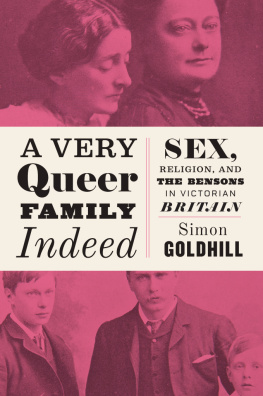
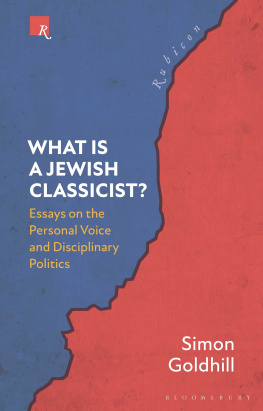
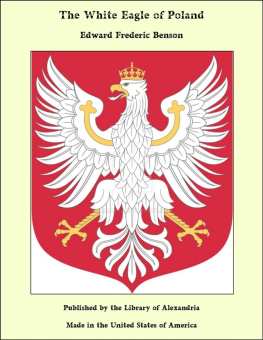
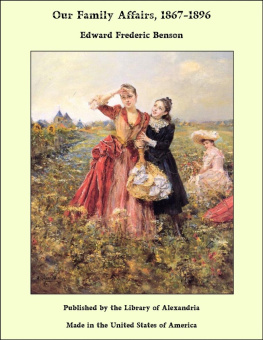
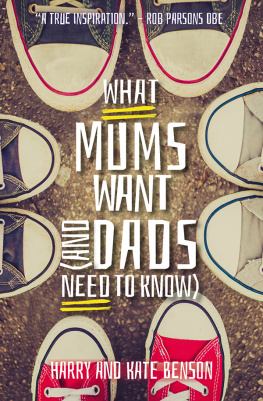
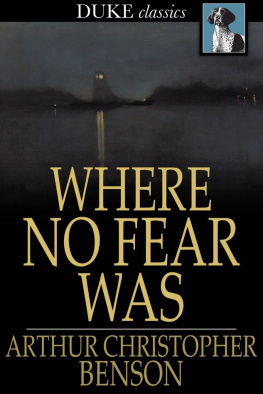
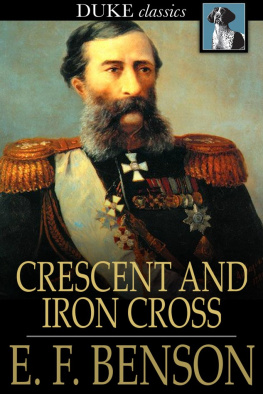
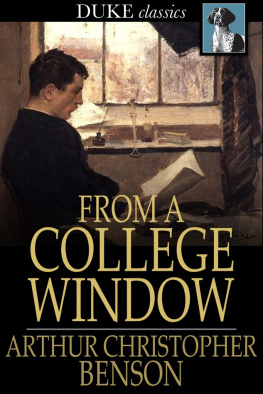
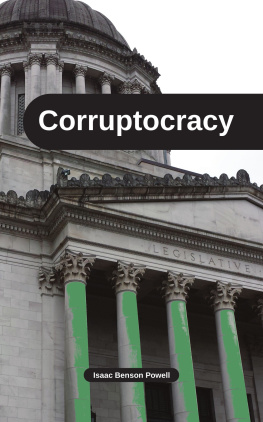
![Robert Hugh Benson [Benson - Robert Hugh Benson Collection [11 Books]](/uploads/posts/book/139831/thumbs/robert-hugh-benson-benson-robert-hugh-benson.jpg)
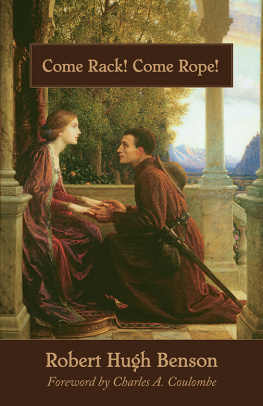


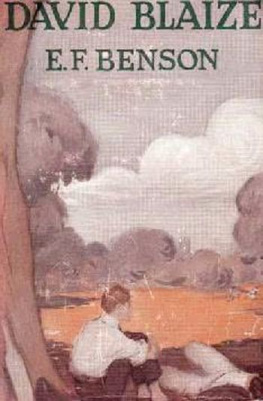

 This paper meets the requirements of ANSI/NISO Z39.48-1992 (Permanence of Paper).
This paper meets the requirements of ANSI/NISO Z39.48-1992 (Permanence of Paper).